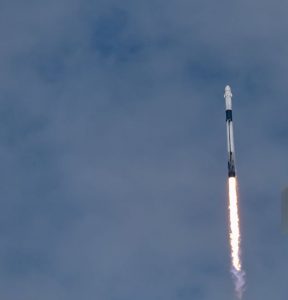Shaping The Future Of XSpace
 Xspace, the revolutionary space company founded by Elon Musk, has dramatically altered the aerospace landscape. The company’s innovations in space technology have redefined space exploration and commercial ventures. Musk’s leadership has led to extraordinary achievements and propelled Xspace into the global spotlight. The combination of Musk’s ambitious vision and the company’s cutting-edge technology continues to push the boundaries of what is possible.
Xspace, the revolutionary space company founded by Elon Musk, has dramatically altered the aerospace landscape. The company’s innovations in space technology have redefined space exploration and commercial ventures. Musk’s leadership has led to extraordinary achievements and propelled Xspace into the global spotlight. The combination of Musk’s ambitious vision and the company’s cutting-edge technology continues to push the boundaries of what is possible.
The genesis of XSpace
Xspace emerged from Musk’s desire to make space travel more affordable and sustainable. Musk’s vision was not just to send astronauts to the Moon but to make humanity a multi-planetary species. In 2002, Xspace was founded to develop reusable rockets. This mission to reduce the costs of space launches has led to significant technological advances. Musk’s leadership and determination were pivotal in turning this vision into reality.
The first breakthrough came with the development of the Falcon 1 rocket. This small but powerful rocket was the foundation for later advancements in reusable rocket technology. Musk’s bold ideas allowed Xspace to innovate quickly, achieving milestones that seemed impossible only a few years earlier. This innovation laid the groundwork for more ambitious projects, including the Falcon 9 rocket and Starship.
The impact of Musk’s vision on Xspace’s success
Elon Musk’s vision has directly impacted Xspace’s rapid success. His ability to think beyond conventional space exploration has driven the company to challenge existing norms. Musk’s determination to make space travel affordable for everyone has reshaped how the space industry operates. Xspace is no longer simply a contractor for NASA but a key player in the global space race.
Through Musk’s leadership, Xspace has developed a strong culture of innovation. This culture fosters creative solutions to complex problems, such as designing reusable rockets and spacecraft. The Falcon 9, a reusable rocket, represents a significant advancement in the industry. By reusing rockets, Xspace has dramatically lowered the cost of sending cargo into space.
Xspace’s technological innovations
Xspace is at the forefront of several technological innovations that are transforming space exploration. One of the most significant breakthroughs is the reusable rocket technology. The Falcon 9 rocket, which can land back on Earth after completing its mission, has drastically reduced the cost of space launches. This reusability is key to making space travel more economical and accessible.
In addition to reusable rockets, Xspace has developed the Dragon spacecraft. This spacecraft has been instrumental in transporting cargo and astronauts to the International Space Station (ISS). The Dragon’s success has paved the way for future deep space missions, including those involving Mars. Xspace’s advancements are not just limited to rockets and spacecraft but extend to satellite technology and global communications.
Elon Musk’s ambition for Mars colonisation
Musk’s vision for Xspace goes far beyond Earth’s orbit. He is determined to make humanity a multi-planetary species, with Mars being the primary focus. His long-term goal is to establish a self-sustaining colony on Mars. Musk believes that making life multi-planetary will protect humanity from existential threats such as asteroid impacts or other global catastrophes.
Xspace is actively developing the Starship spacecraft to achieve this goal. Starship is designed to be a fully reusable spacecraft capable of carrying both cargo and humans to Mars. With the ability to launch large numbers of passengers and equipment, Starship is central to Musk’s plan for Mars colonization. The spacecraft is also intended to be used for missions to the Moon, furthering Xspace’s ambitions for space exploration.
Xspace’s role in space tourism
Xspace has also played a significant role in the emerging space tourism industry. Musk’s company has introduced the concept of commercial space travel, making it possible for civilians to travel into space. The first steps in this journey were made with the development of the Dragon spacecraft, which has successfully transported private passengers to the ISS.
Xspace’s ambitions in space tourism are tied to its broader goal of making space travel more accessible to the general public. As the company continues to innovate, space tourism is expected to become more affordable and common. Musk’s vision of a future where ordinary people can travel to space is beginning to take shape, thanks to the progress made by Xspace.
Xspace’s collaboration with NASA
NASA and Xspace share a close partnership. Xspace has become one of NASA’s most trusted contractors, providing cargo resupply services to the ISS. The Dragon spacecraft has played a central role in these missions. Additionally, Xspace’s Falcon 9 rocket has been used to launch NASA satellites and other payloads into space.
NASA has also relied on Xspace for crewed missions to the ISS. The Crew Dragon spacecraft, designed by Xspace, has safely transported astronauts to and from the space station. This collaboration is a reflection of Xspace’s growing importance in the space industry. NASA’s reliance on the company highlights the innovative solutions Xspace provides for space travel and exploration.
The development of Starship
The most exciting development at Xspace is the Starship spacecraft. Starship is designed to be a fully reusable spacecraft capable of carrying passengers to Mars and beyond. The spacecraft is part of Musk’s broader plan to reduce the cost of space exploration and make interplanetary travel a reality.
Starship is currently undergoing rigorous testing, with several prototypes already launched. The spacecraft is designed to be capable of carrying both humans and cargo on long-duration missions. Its large payload capacity and reusability are key features that set it apart from other spacecraft in development. Xspace’s commitment to the development of Starship demonstrates the company’s determination to push the boundaries of space exploration.
Xspace and the future of satellite technology
Xspace has also made significant strides in satellite technology. The company’s Starlink project aims to provide global internet coverage through a network of small satellites in low Earth orbit. The Starlink constellation is rapidly expanding, with thousands of satellites already in orbit.
The Starlink project is transforming global internet access, especially in remote and underserved areas. Musk’s vision for Starlink is to offer high-speed, low-latency internet to users around the world. This initiative has the potential to bridge the digital divide and provide connectivity to millions of people who previously lacked access to reliable internet services.
Xspace and global space competitiveness
Xspace’s success has heightened global competition in the space industry. As the company continues to make breakthroughs in rocket technology, satellite communications, and space exploration, other nations and private companies are ramping up their space programs. Xspace’s dominance in the commercial space sector has set new benchmarks for other companies to follow.
The company’s rapid progress has forced competitors to innovate quickly and collaborate with other agencies. As more private companies enter the space industry, the entire sector is seeing unprecedented levels of growth and innovation. Xspace’s efforts are pushing the entire space industry forward, creating new opportunities for governments, businesses, and consumers.
The public perception of Elon Musk and Xspace
Elon Musk has become a polarizing figure, with strong supporters and critics alike. His vision for Xspace has been a driving force behind the company’s success. Musk’s bold ideas and willingness to take risks have earned him a reputation as one of the most influential figures in modern technology.
Despite some controversy surrounding Musk’s business practices and social media presence, his leadership has been instrumental in Xspace’s achievements. The public generally associates Musk with innovation, and his efforts to revolutionize space exploration have garnered widespread attention. Xspace’s progress under Musk’s leadership continues to attract global interest.
Xspace’s impact on the space industry
Xspace’s innovations have had a profound impact on the entire space industry. The company’s reusable rocket technology has revolutionized the cost structure of space exploration. By significantly reducing the cost of launching payloads into space, Xspace has made space more accessible to a wide range of organizations, from governments to private companies.
Furthermore, Xspace’s success has encouraged other companies to invest in space exploration. The competitive landscape of the aerospace industry has shifted dramatically, with new companies emerging to take advantage of the opportunities created by Xspace’s breakthroughs. Musk’s vision for the future of space exploration continues to inspire both public and private sector players.
The ongoing journey of Xspace and Elon Musk
Xspace’s journey is far from over. The company continues to push the limits of what is possible in space exploration. Musk’s ambitious goals, including Mars colonization and global internet coverage, are driving the company toward new heights of achievement. The continued development of Starship and the success of projects like Starlink indicate that Xspace will remain a key player in the space industry for years to come.
A legacy of innovation and exploration
Xspace, under the leadership of Elon Musk, has redefined the boundaries of space exploration. The company’s technological innovations have transformed the way space missions are conducted and have opened new avenues for commercial space ventures. Musk’s vision for a multi-planetary future continues to inspire the next generation of innovators. As Xspace continues to evolve, its impact on space exploration and technology will be felt for generations to come.










